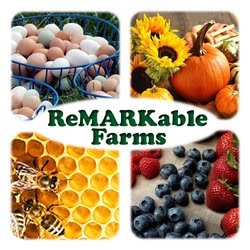In the Kitchen
A short post on herbal tea and some tinctures I am experimenting with...
Chamomile
Last year, I grew an herb garden right outside of our kitchen door. I also planted herbs out in the vegetable garden among the veggies. Here is a picture of chamomile growing among some broccoli plants. The chamomile has the little yellow and white flowers. I would pick off little flower heads and dry them to make chamomile tea.
Chamomile has been used for centuries in teas as a mild, relaxing sleep aid, treatment for fevers, colds, stomach ailments, and as an anti-inflammatory, to name only a few therapeutic uses.
Anise hyssop
Another herb I grew was called anise hyssop. I have to say that I did not know a lot about anise when I planted it. Just that I had read a lot about how great it was. It has pretty purple flowers that bloom late in the season and the bees seemed to really love it. I picked and dried the leaves to make a tea. It has a licorice type flavor.
Taken from
104 Homestead:
Hyssop is often times uses as a cough and cold remedy, usually in the form of a tea. It loosens mucus, aids in congestion, and lessens the symptoms colds, flu, sinus infections, and bronchitis.
There was also this recipe on the 104 Homestead website:
COUGH & CONGESTION TEA
Feel a cold coming on? Try this recipe.
1 tbsp. dried hyssop flowers or 3 tbsp. of fresh
8 oz. water
1 tbsp. honey
1 tsp. lemon
Steep flowers in boiling water in a covered container for ten minutes. Add lemon (optional) and honey. Honey can be adjusted for optimal sweetness.
I did not dry the flowers so now I am wondering if I did this wrong..well, the leaves make a nice tea too!
Calendula
Here is a picture of how I dried the flowers. I just picked off the petals and let them sit out until they were crispy. These are marigold petals. I also hear calendula referred to as marigold. I dried a lot of calendula petals.
Taken from
mamaandbabylove.com:
Marigold tea is great for fussy, colicky babies, fevers and tummy aches. It’s also great for healing trauma and big stressors, since it’s super calming to the nervous system.
I found this graphic on the
draxe.com website. Not sure you can read it but click on the link and you can go to the article.
Rosehips
I didn't actually grow the roses but we have lots of wild roses around the property so in the fall I would go and harvest some. I made a tincture with the rose hips by placing them in some 100 proof vodka and letting it sit for 6 weeks.
The health benefits of rose hips include their ability to reduce the symptoms of rheumatoid arthritis, relieve respiratory conditions, prevent cancer, lower cholesterol, manage diabetes, increase urination, regulate digestion, boost the immune system, increase circulation, and help in building stronger bones.
Comfrey
I planted quite a bit of comfrey in the food forest. There are so many benefits of comfrey that it should probably be it's own blog post.
The most common medicinal use of comfrey are in poultices to help heal swellings, inflammations and sores.
Here is a pic of how I dried the comfrey. The leaves were so large that I just pinned them to the clothes line until they were crispy. Then, I made a
salve with it to put on closed wounds.
Catnip
I mostly wanted the catnip for the cat but then I started to read all kinds of great info about it's medicinal properties.
Used in traditional medicine in Europe for centuries, and first mentioned in the poetic 11th century herbal, De viribus herbarum, catnip was prized for its ability to calm occasional nervousness and promote restful sleep. It was employed as a relaxant and diaphoretic, and was thus helpful in cases of occasional restlessness Considered extremely useful for children, it was often used to support healthy digestion and soothe the stomach.
I had also read that catnip tincture makes a great bug repellent.
Yarrow
I planted yellow and white yarrow plants (I think the yellow one is a hybrid type). Each one had different types of leaves too. I harvested the flowers and some leaves to dry.
Yarrow is one of my go-to herbs for children. It is helpful in relieving fevers, shortening the duration of cold and flu, helping improve relaxation during illness, and relieving cramps associated with hormones or illness. Applied topically, it is helpful with skin itching, rash or other issues.
An external tincture or poultice will often help with hemorrhoids, rashes and broken skin. Some people will notice relief from allergy symptoms by drinking a tea of yarrow and mint.
Mint
Of course, you can't forget the mint. It is a plant that I brought over with us from the rental house. I have it in a pretty shaded area so my hope is that it will not take over the whole herb garden.
These were just a few of the herbs I grew. I use them to make simple teas to drink and I also made some tinctures and oils. To make a tincture, put the dried/fresh herb in a jar and fill with 100 proof vodka. To make an infused oil, used a dried herb and cover it will olive oil. Shake every day (that you think of it) and let it sit for 6 weeks and then strain. I am over simplifying this but I think you get the idea.
~Denise









